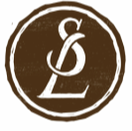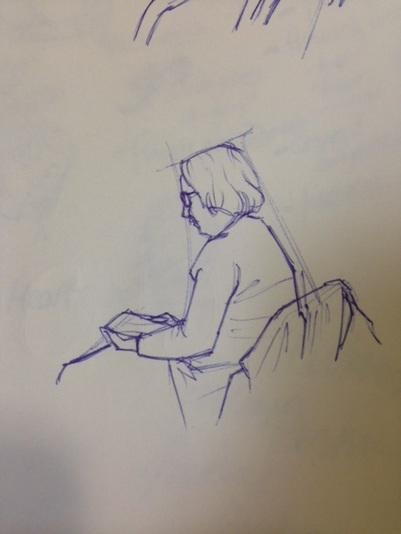|
So, this post is late. Not just a day late-two whole days late. How could I do such a thing? Well, on Monday I was very, very sick. I don’t think I even touched my computer that day--that sick. I didn’t do much of anything that day, actually. Then Tuesday was a recovery and catch-up day. So that brings us to Wednesday. But I AM here, and I’m getting this post up. Better late than never, right? And this is going to have to be another 2-week-er. Because that is how my life is going around now. Envelope drawings were fun this last week. I did mine in ball point pen, which is really a comfort sketching medium for me--yes, I’m more comfortable sketching in pen than in pencil. My highschool teacher had us always sketch in pen and I got used to it. The nice thing about ball point pen is that you can push soft for a light line, and push hard for a dark line. In some of these my “envelope” lines are more visible than others, but you’ll just have to trust me on this one--I drew an envelope for these. This week I want to start transitioning into skills that will help you (and me!) draw from imagination. Most of the exercises we’ve done so far really depend on having your subject right in front of you. But I’m an illustrator, and I can’t always find a real live three dimensional example of what I am drawing. I have to use my knowledge built up from drawing from life (As we’ve been doing for the last few weeks, right?) to imagine how something might look. So this week I’ve decided to try an exercise I’ve actually never done before, but seen recommended elsewhere. I’m hoping that it will be as helpful as I’ve heard it is. If not, well, I’ll keep looking for something to teach these principles. Everything we see can be simplified into combinations of certain basic 3-dimensional forms. Legs can be simplified to cylinders, an apple is basically a sphere, a book is a box shape, etc. Understanding these basic types of forms and how they occupy space can help us to simplify the things we imagine into manageable forms we can understand and draw. So this week, we’re going to get to know those forms. Find or make each of these, all in one color: a cone, a cylinder, a sphere, a box or cube, and a pyramid. I will make some paper patterns (except I can’t really do a sphere), but you may have things around the house that will work--just wrap a can of soup in paper and you have a white cylinder. A white ping pong ball needs no alteration, there is your sphere. They don’t even need to be white, but I would prefer that they are all one solid color, so that the form differences are the important thing, rather than color or value or pattern. Each day, draw three or more of your forms at different angles and arrangements. Pay attention to what happens to each face when they are above your eye level versus below, How they look when stacked on top of each other, in different lighting situations, etc. Be creative. Since we are mostly worried about the forms, don’t get too caught up in the shading--you can make an indication of where the shadows are, but don’t spend forever on this. Like previous weeks, we’re looking at spending about 20 minutes on these, but not more. If it takes you less than 20 minutes to make your sketch and you’ve double checked it, go ahead and sketch something else--but as you do, look for these basic forms in the things you sketch.
Exercise: Form Drawings
Goal/Focus: Understanding basic forms and how they occupy space Materials: Sketchbook, pen or pencil Assignment: Each day, do a drawing of three or more of the basic forms in different arrangments. Arrange them in front of each other, stacked, lined up, or whatever way you can think of. Try different viewing levels--look down on them from above, or place them at eye level, or above your eye level. Spend about 20 minutes on each drawing. If you have extra time or want to do more sketching, look for these forms in everyday object. Draw the object as these basic forms before breaking it down further into specific details--draw a book first as a box/ rectangular prism, draw a vase first as a cylinder, etc. Have fun!
0 Comments
|
Your email will not be shared with anyone. It will only be used for updates from me, and you can unsubscribe at any time.
Categories
All
|
||||||||||||||||||||||||||||




 RSS Feed
RSS Feed